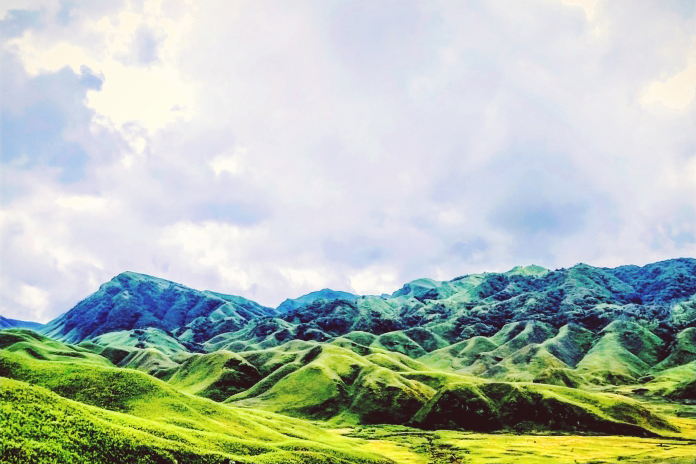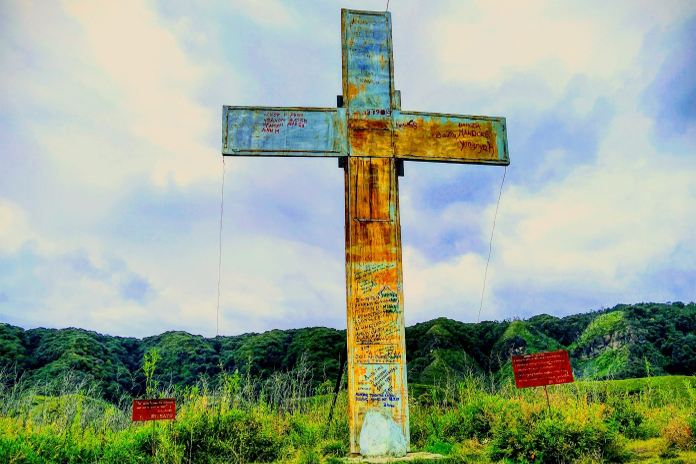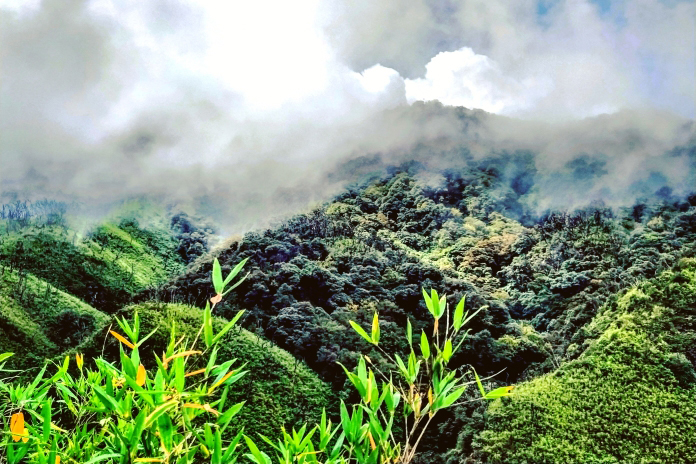
Dzukou Valley Nagaland: The Valley Of Flowers, A Lush Paradise
Dzukou Valley Nagaland canvasses the inter-state boundary of Nagaland and Manipur is a hidden gem of Northeast India. If there’s a place not yet bruised by human touch, it is definitely the picturesque heaven that is the Dzukou Valley.
The valley is situated at approximately 2452 meters above sea level and is spread across 27 square kilometers. This level of elevation helps keep the valley isolated and away from the hubbub of our industrial world. The valley is highly undiscovered by tourists both national and foreign and while it may be the next big thing, a visit to the valley while it’s still unpopular could be much more ethereal than after humans take over.
Dzukou valley boasts a unique topology—ravines and rivulets cutting across a verdant undulating span of knolls and hills and almost no trees in sight. There are small caves throughout and the way the earth folds and ripples is a natural marvel only a few have ever seen. The mystical sights have a rather sedated and moving effect which is difficult to recover from.
In any season, the Dzukou valley will never disappoint. It is at its best throughout the year. The valley is also called ‘The Valley of Flowers’ because of the wide variety of kaleidoscopic wildflowers that blanket it during summer. The Dzukou Lily, exclusive to the valley, can be seen in full bloom here during summers.
In winter, the temperatures drop considerably and if you’re lucky and motivated enough to get out of your warm bed on chilly mornings a lot earlier than the sun, you’ll see delicate crystals on the foliage which serve as quite the muse for photographers. The rivulets freeze solid at night and begin to thaw during the day.
Nature’s divine handiwork is best exhibited by this luscious piece of land with its paradisal and idyllic views. The panoramic sunrise and sunsets are unmissable.
WHETHER YOU’RE LOOKING FOR A TRANQUIL REFUGE OR YOUR NEXT HIKING, SPELUNKING, TREKKING OR EXPLORATORY ADVENTURE, DZUKOU VALLEY WILL NOT FAIL TO DELIVER.
Things to do:
Revel in the mesmerizing views of the valley from the rest house. The rest house offers a perfect unhindered view of the valley and it is ideal if you want to catch a scenic sunrise/sunset. It is the best spot to photograph the sunset as it sinks behind the mountains toward the west.
The Ghost cave also called the ‘Bhoot Gufa’ is a 15-minute walk from the rest house. It is a kilometer long cave so carrying flashlights would be helpful.
Hike up to the second-highest peak in Nagaland, the Japfu peak. It is a good idea to hire a tour guide as it is possible you might get lost on the way.
Trek to the bottom of the valley to the Christian cross. After you’ve spent a considerable amount of time in the rest house, it is a good idea to walk to the bottom and explore the valley. There’s also a small hill with a Christian cross on it that is not visible from the guest house due to a trick of the light.

Interesting facts:
The valley is a plastic-free zone. If you’re carrying any plastic bags, you will have to deposit a certain amount which will be returned to you on retrieval of the bag at the exit.
The valley gets its name from two origins, one being from the Angami/Mao word which means cold water referring to the icy-cold streams found throughout.
There are legends of white elephants that live in a hidden forest in the valley along with other wild animals.
The Viswema trek passes through tall and elegant rainforests.
There is a legend of a female spirit that dwells in the valley and claims one male life each year.
The Angami and the Mao people are involved in an ongoing dispute over the ownership of the Dzukou Valley.
The valley can be entered from both Manipur and Nagaland. It can be visited in two parts – the West and the South Dzukou.
Dzukou Valley Nagaland Best Time to Visit:
Although the valley promises a pulchritudinous experience throughout the year, the best time to visit would be from April to September if you don’t want to miss the flower parade and prefer warmer temperatures.
Although, during monsoon from July to September the valley is considerably wet and you might encounter leeches. If you prefer a drier, cozy, and soothing vacation, winter is the best time to visit the Dzukou Valley.

Helpful Tips to Protect From Leeches:
Wear pants that are preferably long enough to be tucked into your socks.
Preferably wear a long-sleeved shirt.
Apply mosquito repellent to shin areas that could be exposed.
Before sitting down, look for a dry spot, and make sure there aren’t any leeches.
Timings and Entry Tickets:
The valley is open 24 hours.
There is an entry fee to be paid once in the duration of your trip at the rest house:
Rs. 20/- for Indian citizens from neighboring villages
Rs. 50/- for other Indian citizens
Rs. 100/- for foreigners
Traveler tips:
If you want to explore Dzukou Valley well, a 3-day trip is ideal.
Tourists require an Inner permit to visit Naga Hills so if it is on your agenda, make sure you acquire one from the DC court in Dimapur of Nagaland.
Frequency of cabs reduces on weekends so make sure you pre book your cabs, plan accordingly.
You can either stay in the rest house in the valley though it might not be luxurious, stay in Kohima, camp in the valley, or sleep under a rock overhang.
You can even cook your own meals in the rest house. The rest house charges 50/- for public dormitories and 300/- for VIP rooms but they might usually be unavailable.
Foam mattresses, blankets, and utensils are available for rent on a nightly basis. You can avail a decent dinner and breakfast at the rest house if you’re not planning on cooking for yourself. Tea and Coffee are also available.
Carry enough warm clothes.
How to reach Dzukou Valley from within Nagaland:
From Kohima, the capital of Nagaland, the valley can be reached in two ways – via Viswema or via Zakhama. To get to either of these towns, there are taxis or vans available that take 4-5 people and charge around 40/- per person. The only way forward from either of the towns is on foot.
Via Zakhama:
If you’re a serial trekker and are used to rigorous activity, the Jakhama trek might be suitable for you. From Jakhama it is usually a 3-4 hour trek to reach Dzukou Valley. It is quite a steep climb so be mindful of the weather as it might be slippery and muddy during the rains. The Zakhama trek is a lot more demanding and requires physical fitness.
Via Viswema:
The Viswema trek is comparatively easier with only an hour-long trek from the trekker’s point. The catch is that reaching the trekker’s point takes around 3 hours walking on a motorable road. If you cannot make this walk you can hitchhike or hire local transport but be ready to pay up to Rs. 1500.
We recommend the Viswema route for the ascent and the Zakhama route for the descent.
How to Reach:
Dzukou Valley in Nagaland is easily accessible by air, by road, and by train.
By Air:
The most accessible airports to Dzukou Valley are the Dimapur airport and the Imphal airport. The closest of the two is the Dimapur airport, and it lies at a 96-kilometer distance from Dzukou Valley. The Imphal airport lies at a distance of around 110 kilometers.
By Train:
The nearest railway station to Dzukou Valley is located in Dimapur and that is roughly around 74 kilometers away. So one could opt to hire a taxi from Dimapur to reach Kohima.
By Road:
You can travel via NH29 and NH2 from the Dimapur airport to get to Dzukou Valley, as this place is very accessible via road. You can access Dzukou Valley from Imphal airport via NH2. Both of these trips take a little less than 3 and a half hours.
Dzukou Valley in Nagaland in all its natural splendor remains a symbol of purity. Untouched by human activity, it thrives and shelters the exquisite flowers. A visit to this place is surely an experience that you would cherish. However, we hope that you help this valley retain its pristine beauty by refraining from littering.
Credits:
Srikakulamads would like to thank Rajarshi Ray for providing us with excellent photos of Dzukou Valley, for us to share with you in this article. You can also check out his Instagram @rajarshi26

